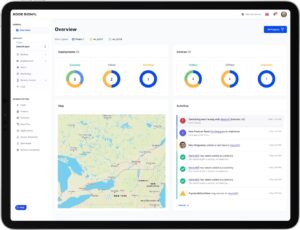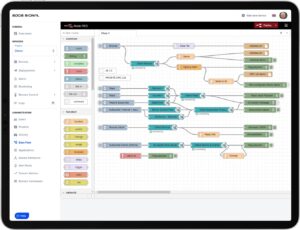
Enabling edge computing at the far edge as well as 5G multi-access level for the Department of National Defence just got easier — in part thanks to work done in Kanata North.
In 2022 DND identified the need to accelerate their digitization projects. Through collaboration with Kanata Tech Park-based software developer company Edge Signal and the University of Ottawa, the initiative quickly got underway.
“With our collaborators we were thinking of a solution to make the edge systems stronger, more resilient, more scalable, and more intelligent, with the support of artificial intelligence solutions,” said Burak Kantarci, Professor of Electrical Engineering and Computer Science at the University of Ottawa and Director of Smart Connected Vehicles Innovation Centre.
The project, launched under the umbrella of the Innovation for Defence Excellence and Security (IDEaS) program, was also aimed towards supporting artificial intelligence-based services in a 5G environment. It has the support of telecommunications company Telus and has had fruitful outcomes so far.
According to the report, AI-backed autonomous decision-making models were implemented, providing DND with “dynamic resource management among different levels of edge computing, from the device (far) edge to the fog edge, and from multi-access edge to centralized public/private cloud.”
Arda Ozgun, CEO of Edge Signal Corporation, explained: “DND identified the need for computing in remote locations, vehicles, tents, etc. In collaboration with uOttawa, we provided a seamless abstraction layer for edge computing on the far edge as well as the 5G side to provide DND with better capacity.”

The project scope included the following:
- Reliable and secure edge compute infrastructure management
- Load balance with 5G MEC (Multi-Access Edge Computing)
- Applying IT and security policies to remote systems
- Managing vehicle computing systems
- Predictive maintenance and analytics
- Data anonymization
- Real-time, situation-aware insights, such as distracted driving
All edge solutions require two components: One is communication the other one is computing. When you put them together, you can optimize the two together. 5G has a great bandwidth, redundancy and capacity. If you combine it with computing the value of it increases significantly.
“Just look at anomalous driving patterns,” explained Kantarci. “Devices that are mounted in the car don’t have the capability to give us accurate information on the driving actions. If we offload this data to the cloud, the latency is problematic. Our solution is to offload this to edge resources and make the decision on the edge in real time.”
“It’s very hard for you to share that computing element on the device with other applications. But if you move that computing to the base station, then all the vehicles in that region can use that computing resource,” said Ozgun. That’s where the efficiency will come from. You are still very close to where data is generated. You’re not in the car but very close to the car. And you still can serve multiple applications to multiple devices to multiple vehicles.”
What are the opportunities?
“Every day, we see thousands of use cases, most of them untapped. Now is the time for edge intelligence!” Ozgun explained: “We see five main motivations for our customers to use edge computing. One of them is data residency and privacy. Before sending the data to the cloud as it is, customers would like to anonymize the data before it leaves their premises. When you do your processing in the cloud, it’s not deterministic. You don’t know that you are going to get the result back. But when you do your computing on the device at the edge, then it’s very deterministic. This is very important for mission critical applications. Other motivations include bandwidth efficiency at the edge, autonomy, and legacy equipment where physical connections are still required.”

The importance of working in Kanata North
Edge Signal is one of the Kanata North Tech Business Park’s newer businesses. It is powered by nearby Wesley Clover, in partnership with Amazon Web Services.
Smart Connected Vehicles Innovation Centre was launched by uOttawa in Kanata North in 2021. Its open-access space offers rapid, low-cost and de-risked experimentation and testing for connected and autonomous vehicles, which allows researchers and industry partners to access self-driving car prototypes, drones, and certain types of ground robots.
Kantarci said the proximity to collaborators and industrial partners is what originally drew them to the community.
“This paves the way for attracting new talent and fresh blood to our research lab. They know that most of them are going to be employed somewhere within the park. That experience is valuable for them,” he said. “Being in downtown would have had some restrictions to access, preventing us from meeting with collaborators this frequently.”
You can read more about the case study here.
By Charlie Senack, Ottawa Business Journal
